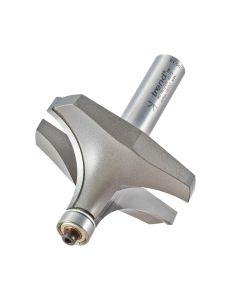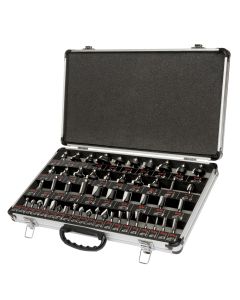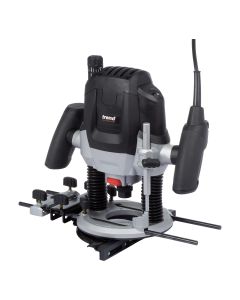Toy Cars, Lorries and Trees Routing Project
An easy way to make moulds from lengths of wood.


In the woodworking industry the router has proved itself to be the ideal tool for batch production work. But, it is not only in the professional market that it can lend a hand in saving woodworkers both time and effort.
For the home craftsperson or the small craft workshop, the router offers versatility second to no other power tool.
Combined with the vast range of intricately shaped cutters now available, the routing concept requires only a little imagination and innovation to turn a two dimensional profile into a three dimensional object.
Routing Application
Good examples of this method of production on a small scale are my toys by the ´metre´. Toy cars, lorries and trees, as pictured here can all be simply and quickly produced by this method, along with other similar outline designs such as buildings, boats and animals. Each is cut with one or a combination of basic cutter profiles, machining along the length of the timber ready for crosscutting to separate each individual item.


When making cars and lorries, first form rebates along the bottom edges of the strip and cut a groove along the centre of the bottom face leaving two square beads to be machined to the wheel profiles. Large areas of waste such as on the flat back lorry can be sawn on a table saw.
The saw table can also be used to cut angled surfaces for house roofs and other wide flat surfaces. Not all the cuts will be able to be made by simply running the square edges of the timber against the router table or fence.
It may be necessary to make up support blocks or jigs to be able to present the work to the cutter at different angles or to keep it level while machining.
You will probably find that many interesting shapes can be made up using your existing cutters.


Alternatively, refer to the new Trend catalogue to trace out various profiles and make up your own combinations before purchasing your cutters. Remember that having machined the cutter profiles on the timber length, a little final shaping to smooth in curves or remove sharp corners can be quickly and easily achieved using simple hand tools. Likewise cutter profiles can be joined or married up smoothly in a similar fashion.


The completed Toy Vehicles and Trees Routing Project
Written by Gordon Warr - Established woodworking craftsman.



